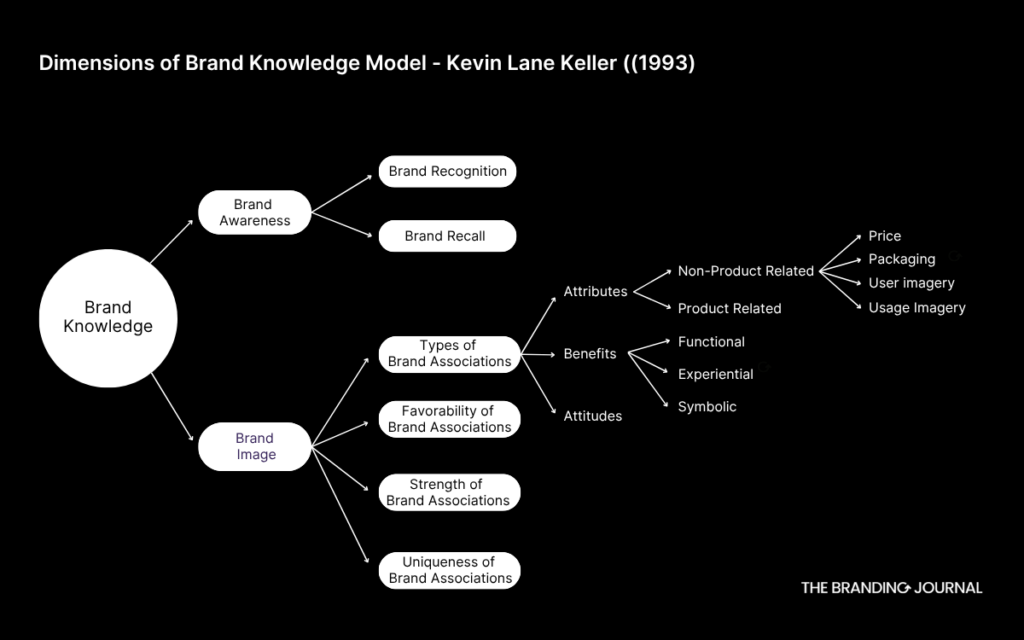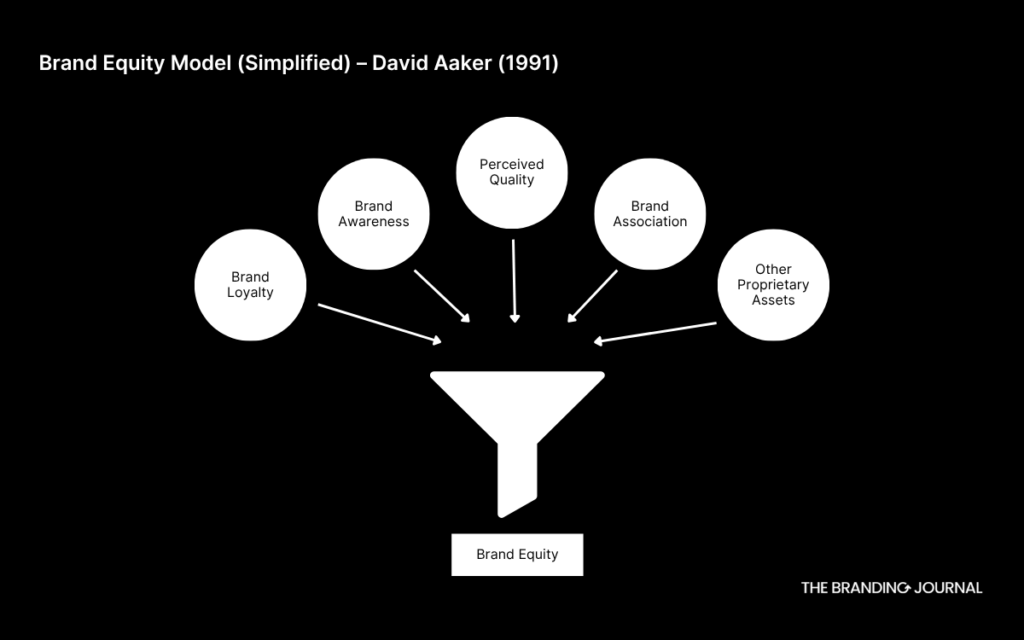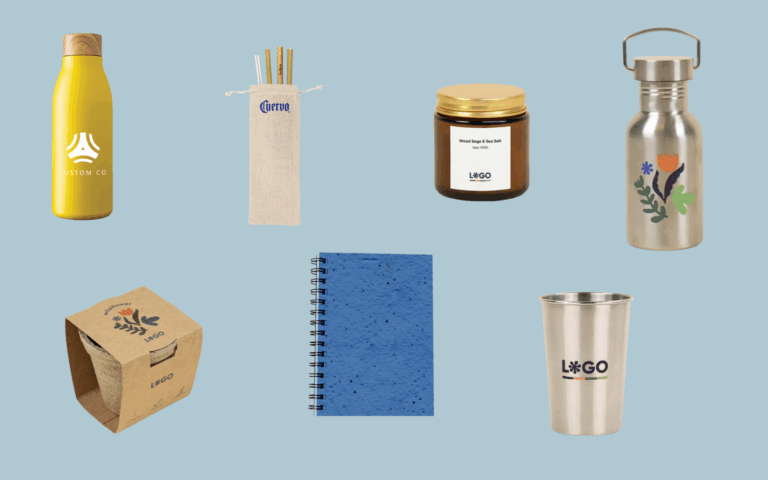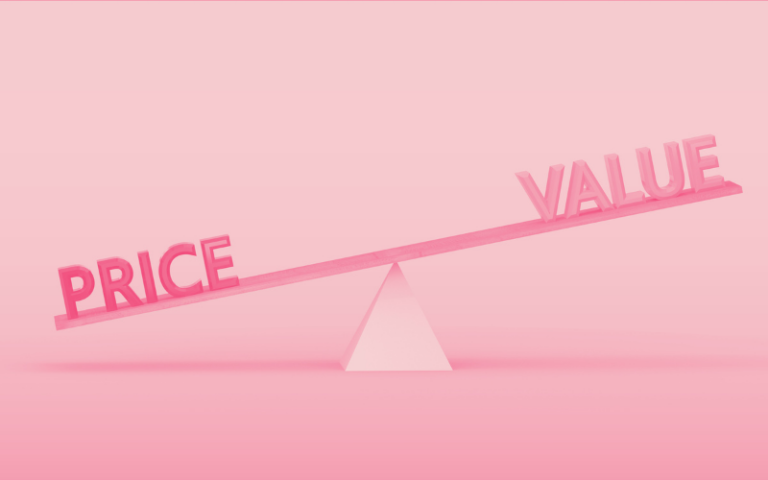Before we start this article, I have a question for you: can you name your favorite brand right now?
Take a moment, and if you can, try to picture it.
Now, think: how did this brand first enter your life? Was it through your own research, a friend’s recommendation, or simply seeing it everywhere?
Maybe you don’t remember the exact moment, and that’s perfectly normal. Becoming familiar rarely happens in an instant but rather via a series of moments, touchpoints, and gradual experiences. This journey from stranger to familiar is what we call brand awareness.
In this article, we’ll explain everything you need to know about brand awareness and how you can boost it for your own brand. We will clarify:
- What brand awareness means (based on academic research and theory)
- Why it’s one of the most fundamental aspects of branding
- And most importantly, how you can build it for your own brand
Proven Systems for Business Owners, Marketers, and Agencies
→ Our mini-course helps you audit and refine an existing brand in 15 days, just 15 minutes a day.
→ The Ultimate Brand Building System is your step-by-step blueprint to building and scaling powerful brands from scratch.
Table of Contents
1. Fundamentals of Brand Awareness (Definition, Dimensions & Theoretical Frameworks)
Definition
Brand awareness refers to the level of familiarity people have with a particular brand, representing how strongly the brand is present in their memories. The concept is composed of two primary dimensions – brand recognition and brand recall. This means whether people:
- Can recognize the brand when they see its elements, like the logo or packaging, a jingle, or any visual cue (brand recognition)
- Can remember and bring the brand to mind, even without being directly exposed to it (brand recall)
The level of brand awareness shows how well-known and recognizable a brand is to consumers and other stakeholders. Strong brand awareness means the brand has established a noticeable presence in people’s minds.
The different dimensions and levels of brand awareness
As mentioned earlier, brand awareness consists of two key dimensions:
- Brand recognition, which, according to Keller[1], is “consumers’ ability to confirm prior exposure to the brand when given the brand as a cue”. For example, spotting the Apple symbol on a metallic laptop and instantly knowing it’s an Apple product.
- Brand recall, defined by Keller as “consumers’ ability to retrieve the brand from memory when given the product category, the needs fulfilled by the category, or a purchase or usage situation as a cue”. For example, when you need a ballpoint pen, brands like Bic or Pilot naturally come to mind.
Based on these two dimensions, and to better understand the progression from being an unknown brand to becoming a famous one, David Aaker[2] has designed what we call “The Brand Awareness Pyramid.”

- Level 1 – Unaware of the brand: When people haven’t been exposed to the brand before or don’t remember/know it.
- Level 2 – Brand recognition: The most basic level of brand awareness, where people can recognize the brand when being exposed to it.
- Level 3 – Brand recall: At this level, people can recall the brand from memory when given a product category or specific need. There are two types of brand recall:
Aided: with the help of prompts or cues
Unaided: when people can recall the brand without the help of prompts or cues - Level 4 – Top of the mind: The higher level of brand awareness, where the brand is the first one that comes to the consumer’s mind when thinking about a particular product category or need.
Main theoretical models and frameworks involving brand awareness
In addition to the Brand Awareness Pyramid presented in the previous section, several academic models and frameworks demonstrate the importance of brand awareness in branding. Let’s review the main ones.
Dimensions of Brand Knowledge Model (1993) – by Kevin Lane Keller
One of my favorite frameworks for understanding the concept of brand awareness and its relationship to other branding elements, such as brand knowledge and brand image, is Keller’s Dimensions of Brand Knowledge Model[3], published in 1993. It’s definitely not the most recent one, but it remains visually clear and relevant today.

The model also nicely illustrates how building brand awareness and brand image must occur hand in hand to create the desired brand knowledge in people’s minds.
Hierarchy of Effects Model (1961) – by Lavidge & Steiner

The Hierarchy of Effects Model describes the stages consumers go through when exposed to advertising and making purchases: brand awareness, learning about and developing feelings towards the brand, and finally making a purchase.
This model highlights the significance of brand awareness, as consumers are unlikely to consider a brand they are unfamiliar with. It also shows that brand awareness is the crucial first step in the purchasing process. [4]
Brand Equity Model (1991) – by David Aaker

Aaker’s Brand EquityBrand equity represents the value of a brand. It is the difference between the value of a branded product and the value of that product without that brand name attached to it. More Model summarizes the five key components that contribute to a brand’s overall equity, which represents the added value the brand brings to the product or service. One of the five components is brand awareness:
- Brand Loyalty: The attachment and commitment the consumer has towards the brand.
- Brand Awareness: The consumer’s ability to recognize and recall the brand.
- Perceived Quality: The consumer’s judgment about the brand’s overall quality or superiority.
- Brand Associations: The thoughts, feelings, and images the consumer associates with the brand.
- Other Proprietary Assets: Such as patents, trademarks, and channel or trading partner relationships.
Substantial brand equity can lead to competitive advantage, premium pricing, and greater customer loyalty.
Additional frameworks
Brand awareness is such an essential part of branding that it’s, of course, part of many other frameworks and models.
For example, Keller’s Customer-Based Brand Equity Framework (as part of the brand salience foundation) and the Brand Awareness Matrix, among many others.
Brand awareness vs. top-of-mind vs. brand salience
Brand awareness is often confused with other terms, such as brand salience or top-of-mind awareness.
So, what’s the main difference between these terms?
- Brand awareness refers to the level of familiarity people have with a particular brand and the degree to which they can recognize or recall it in any given context.
Example: If you ask, “Have you heard of Brand X?” and someone says yes, that’s brand awareness.
- Top-of-Mind is the highest degree of brand awareness, where the brand is the first one that comes to a consumer’s mind when thinking about a particular product category or need.
Example: If you ask someone, “What’s the first brand you think of for hiking gear?” and they respond “Patagonia,” then Patagonia has achieved top-of-mind status for this person in that product category.
- Brand salience is ‘the capacity of the brand to be evoked spontaneously in consumers’ minds, as soon as the need to buy the product type appears’ [5]. It’s similar to brand awareness but more relevant for companies, as it occurs during purchasing situations.
Example: When someone thinks of buying second-hand clothes online and immediately thinks of going to ThreadUp, that’s brand salience.
In other words, brand awareness is about being generally known, while brand salience is about being the first brand that comes to mind when purchasing or needing the product or service. Brand salience is not just about brand familiarity but also how people perceive the brand (brand image and associations).
A brand can have high awareness but low salience if it is not the first brand that comes to mind when consumers consider a purchase. Conversely, a brand can have low awareness but high salience if it is the dominant brand in a particular category.
Ultimately, brand salience is considered more relevant than general brand awareness, as it reflects the brand’s competitive position and its ability to influence purchasing decisions. It’s essential to note that building brand awareness, in addition to establishing the brand’s image, is crucial to ultimately achieve brand salience.
Summary table
| Term | What it means | Example |
| Brand Awareness | Recognizing or recalling a brand | “I know that brand.” |
| Top of Mind | The very first brand recalled in the category | “This is the first brand I think of.” |
| Brand Salience | How quickly/easily a brand comes to mind in a purchasing or consumption context | “I think of this brand when buying.” |
2. Why Is Brand Awareness So Crucial for Organizations?
Awareness is crucial for a brand’s success and its marketing strategy. It offers many benefits for companies and organizations. Let’s summarize them here:
- Without brand awareness, your other branding efforts are mostly ineffective. You need to ensure that people are in contact with the brand and that it comes to mind for consumers and other relevant stakeholders. Otherwise, your remaining branding and marketing efforts will lose their impact. Increasing awareness has to go hand in hand with other branding steps.
- Brand awareness is the foundation for brand perceptions and associations. If people are unfamiliar with the brand, they will simply not engage with it or form any connections or associations in their minds. However, if you invest in making people aware of your brand, they will become more familiar with it and gradually develop perceptions about it.[6]
- When a brand is known, it automatically gains a certain level of trust and credibility in the eyes of consumers and stakeholders. This can lead to increased loyalty, positive word of mouth, and better business opportunities.
- Brand awareness increases the chances of brand preference[7]. When a brand is well-known, it has a competitive edge over lesser-known brands, as consumers are more likely to choose a familiar brand. A certain level of familiarity unconsciously helps build a sense of reassurance and trust, making consumers more likely to choose that brand.[8]
- Higher brand awareness often translates into increased sales and revenue for the organization as more people recognize and are willing to purchase the brand’s products or services.
- Highly aware brands often have more pricing flexibility. This is because consumers associate the brand with quality and are willing to pay a premium for it.
- A well-known brand can attract top talent and partners to the organization, as people want to be associated with a successful brand.
- Strong brand awareness contributes to building brand equity, which is the overall value that a brand holds. This equity can be a valuable asset for the organization.
3. How To Build Brand Awareness
General process
To increase awareness of your brand, you need the right balance of brand strategy and brand communications/marketing activities. We recommend following the below steps.
Step 1: Start by developing a clear brand strategy. This includes defining your brand’s name, logo, visual identity, essence, personality, positioning, packaging, and other key elements. Having a cohesive and professional brand identity is essential for effective promotion. The more consistent your brand elements are, the more recognizable and effective your exposure activities will be. Learn how to create a complete brand strategy from scratch here.
Step 2: Once your brand strategy is in place, you can develop your marketing and brand communication plan to increase its awareness. Building brand awareness is an ongoing process. It requires two main approaches[9]:
- Helping people recognize the brand, thanks to the previously defined brand identity, choosing the proper communication channels, and increasing the number of times your target audience is exposed to it. Repetition is key here. The more you can increase exposure over time, the higher your brand visibility will be.

- Helping people recall the brand by designing campaigns that forge strong associations with the product category or other specific consumption patterns.

Pro tips:
- When building brand awareness, avoid jumping on shocking or sensationalist campaigns mainly designed to go viral. The main objective is to establish long-term brand equity and prioritize campaigns that facilitate brand recognition and encourage strong product category associations, which are essential for effective brand recall.
- After achieving an adequate level of brand awareness, you can focus more on developing the brand image, which involves building specific perceptions in consumers’ minds.
Brand awareness tactics
Some of the most effective communication strategies for building brand awareness today include:
Tactic #1: Influencer partnerships
Collaborating with influencers is one of the most effective ways to reach new audiences nowadays. Influencers have gained the trust of their audiences. If your brand aligns with their universe, they can help you present it in a way that speaks to their communities of engaged followers.
There are influencers in all types of industries. Some have large communities, while others have smaller ones. The latter ones can be more accessible and still be an excellent option for smaller brands.
Tactic #2: Digital marketing and content creation
Our digital world is a treasure trove of opportunities for brand awareness. There are numerous ways brands can enhance their online visibility. Some require a budget, and others can be achieved for free:
- Digital advertising (Google, social media) to target specific demographics and interests, driving traffic and potential conversions.
- Search Engine Optimization (SEO) to increase visibility on search engine results page (e.g., appearing as the first result on Google)
- Generative Engine Optimization (GEO) to increase visibility in AI-driven search engines and generative answers
- Social media posts & engagement to connect directly with your audience, attract new ones, and regularly communicate around your brand.
- Content marketing encompasses publishing blog posts, podcasts, video content, social media content (as mentioned above), and even user-generated content. These diverse, high-quality contents aim to establish your brand as an industry authority and optimize for search engines (like Google, but also other social media platforms where users look for content, such as TikTok or YouTube).
- Newsletters and e-mail marketing campaigns are a perfect way to deliver valuable information, build trust, and keep your brand top-of-mind with subscribers.
- Google Maps Profile can enhance local visibility and make it easier for potential customers to find your business.
- Online directory listings are a solution to improve discoverability by ensuring your brand is listed in relevant online directories.
- Online community participation can increase brand awareness through active engagement in relevant online communities (think of Reddit, Quora, Discord, social media platforms, and private digital communities).
Tactic #3: Traditional Media and Advertising
Depending on your industry and financial means, leveraging traditional media channels can be a wonderful way to increase brand awareness and credibility, especially since many brands are focusing solely on digital media. Traditional media include:
- Press releases to increase media coverage for your brand
- Media interviews which offer opportunities to share your brand’s story
- Print advertising to reach new audiences through newspapers and magazines
- Radio spots to target new audiences via radio or podcast ads
- TV commercials for capturing attention on a broad scale
- Billboard advertising to create high visibility in strategic locations
- Magazine features, enhancing visibility and associations via in-depth articles
Tactic #4: Partnerships
You don’t have to do everything alone. Sometimes, partnering with other organizations can help expand your brand’s reach and leverage complementary strengths. These can include influencer partnerships, of course, but also:
- Co-branding initiatives which allow you to collaborate with another brand to create a joint product or service, combining strengths and audiences.
- Brand collaborations involve partnering with complementary brands on content, events, or other initiatives to expand reach to new audiences.
- Local partnerships, such as teaming up with businesses in your local area, enable you to cross-promote and leverage local brand awareness.
- Affiliate programs. They consist of enabling other companies or individuals to promote and sell your products or services. In exchange, they earn a commission on each sale.
Tactic #5: Offline Activities
Participating in offline events and activities can complement your digital efforts to increase your brand’s visibility. Think of participating in:
- Local events to enhance community presence and build brand connections
- Trade shows to increase visibility among industry professionals and potential customers
- Pop-up stores to offer unique brand experiences that attract attention
- In-person workshops/seminars to position your brand as an expert and engage directly with your audience
- Speaking engagements to showcase your brand’s expertise and reach new audiences
- Networking events to form strategic connections that can amplify your brand’s reach
- Community involvement and CSR to build awareness and positive associations among the public through social actions and community-focused initiatives
- Event sponsorships to align your brand with popular events and gain exposure
- Guerilla marketing to create buzz and memorable impressions with creative tactics
Tactic #6: Educational solutions
Providing educational content and resources can position your brand as an industry expert and attract relevant audiences in a unique way. Think of:
- Publishing eBooks/guides/case studies, which enhance awareness and credibility through valuable insights
- Running webinars, as they can help you reach new audiences via recommendations
- Free training to attract potential customers
- Expert talks at industry events that can expand your brand’s reach
- Industry research, boosting your brand’s awareness as a go-to authoritative resource
Tactic #7: Customer experience and word-of-mouth
Sometimes, the best way to increase awareness for your brand is to focus on your customers and their direct experience with the brand. Consider using:
- Product sampling, allowing customers to try your offerings firsthand and for free
- Referral programs that incentivize existing customers to recommend your brand in exchange for benefits
- Customer testimonials that showcase positive experiences with your brand
- Brand ambassador programs to leverage influential advocates to promote your brand
4. Recommended Budget Ratio: Brand Awareness vs. Building Brand Image/Associations
Now that we’ve clarified the value of brand awareness in brand strategy and management, and how it can be achieved concretely, you might be wondering: okay, so how much should I spend on brand awareness, vs. on building the correct brand associations and image in the minds of my audiences?
This is a valid question and one that many people also wonder about.
To be honest, there’s no one-size-fits-all answer, as everything depends on your brand’s situation and level of maturity. However, a common recommendation in the industry is to follow these ratios:
- Building Brand Awareness: around 50-70% of the budget
This includes spending on advertising, PR, influencer partnerships, digital marketing, and any other relevant outreach activities designed to increase visibility and recognition. As mentioned earlier, by making your brand more familiar, you are building brand preference and laying a solid groundwork for establishing a strong brand image and associations.
- Building Brand Image/Associations: around 30-50% of the budget
Here, we are talking about activities such as content creation, creative commercials that focus on storytelling, experiential marketing, customer experience enhancements, reputation management, and initiatives that deepen emotional connections with the audience.
What we recommend is to run these initiatives in parallel, as they complement each other. Again, keep in mind that these ratios are provided only as a rough guideline and may vary depending on the company’s goals, market conditions, and the brand’s maturity. Adjustments may also be necessary depending on specific campaign objectives or market dynamics.
5. Measuring Brand Awareness
Measuring brand awareness using a single metric can be challenging, as it involves several dimensions. We recommend choosing at least one KPI related to brand recall and another one related to brand recognition.
There are many ways one can measure brand awareness, but here are our favorite metrics:
KPI #1: Brand recognition
KPI description:
The degree to which respondents can correctly recognize the brand amongst other brands.
Examples of measurement methods:
Surveys and focus group discussions where participants are asked to identify and name the brand after being exposed to an ad, jingle, logo, or any other aspect representing the brand.
KPI #2: Brand recall
KPI description:
The degree to which respondents can correctly remember and name the brand with (aided brand recall) or without (spontaneous brand recall) any aid or hint.
Examples of measurement methods:
Surveys, focus group discussions by asking, “Can you name any brands in this particular industry?”.
KPI #3: Brand familiarity
KPI description:
The degree to which respondents are familiar with the brand.
Examples of measurement methods:
Surveys, focus group discussions by asking:
“Are you familiar with [name of the brand]? If so, what do you know about this brand?” “Which brands of the following list have you heard of? What do you know about them?”
In this case, it can be interesting to take note of the qualitative data related to what people know about your brand).
KPI #4: Brand reach
KPI description:
The degree to which people come in contact with your brand.
Examples of measurement methods:
This can be achieved in various ways, including tracking online and offline ads, unique visitors to the brand’s website, social media interactions, video views, the number of products tested, the number of store visits, word of mouth, and other relevant metrics. Measurement choice will depend on the main points of contact/media the brand has with consumers.
Surveys and interviews can also be very helpful in measuring brand reach. There could be questionnaires on the brand’s website asking how visitors found the brand or if they had heard of it before. It is also possible to ask current customers how and when they became aware of the brand.
KPI #5: Brand mentions
KPI description:
The number of references to the brand, its products, or services. Be aware that these can be both positive and negative.
Examples of measurement methods:
The easiest way to measure brand mentions is to focus on online mentions (on social media, blog posts, newsletters, review sites) via online monitoring tools.
To measure offline brand mentions, it is best to use surveys or focus groups by asking: “Did someone recommend or talk to you about the brand in the past?” “Have you come across reviews or comments about this brand?”
KPI #5: Top-of-mind brands
KPI description:
Top-of-mind awareness refers to the first brands that are mentioned by customers when thinking about a specific industry or product category
Examples of measurement methods:
Surveys and focus group discussions by asking, “Which brands do you know in this specific industry or product category?” without suggesting potential answers.
–> If you enjoyed the list of brand awareness measurement methods, know that our brand-building course includes a whole chapter on brand measurement. You will find examples of formulas for each KPI, but also a more extensive list of KPIs related to other brand performance dimensions, such as brand image, brand preference, and brand loyalty.
Key Takeaways
- Building brand awareness is one of the most fundamental aspects of brand strategy and brand management. Without awareness, the remaining branding efforts lose most of their impact.
- The two main dimensions of brand awareness are brand recognition and brand recall.
- Higher levels of brand awareness are important for building positive brand associations and perceptions.
- Brand awareness can positively impact brand preference, trust, and sales. It creates a shortcut in the decision-making process.
- There are numerous tactics to increase brand awareness, including digital marketing, traditional media, influencer partnerships, and more.
- Building brand awareness and brand image/associations should be done in parallel, with a general preference for a higher budget allocation to brand awareness. This depends, of course, on the current brand context, goals, and maturity levels.
- There are many KPIs used to measure brand awareness; some include brand recognition, brand recall, brand mentions, brand reach, brand familiarity, and more.
References:
[1]Keller, K.L. (2013). Strategic Brand Management : Building, Measuring and Managing Brand Equity. 4th ed. Harlow: Pearson.
[2]Aaker, D.A. (1991). Managing Brand Equity: Capitalizing on the Value of a Brand Name. Journal of Marketing, 56(2), p.125. doi:https://doi.org/10.2307/1252048.
[3] Keller, K., 1993. Conceptualizing, Measuring and Managing Customer-based Brand
Equity. Journal of Marketing, Volume 57, pp. 1-22.
[4] Lavidge, R. J., & Steiner, G. A. (1961). A model for predictive measurements of advertising effectiveness. Journal of Marketing, 25(6), 59-62
[5]Kapferer, Jean-Noël. The New Strategic Brand Management: Creating and Sustaining Brand Equity Long Term. 4th ed., Kogan Page London, 2008. Page 438.
[6]Keller, K.L. (2013). Strategic Brand Management : Building, Measuring and Managing Brand Equity. 4th ed. Harlow: Pearson.
[7]Anand, A. (2023). Brand Awareness. International Journal For Multidisciplinary Research, 5(3). doi:https://doi.org/10.36948/ijfmr.2023.v05i03.3571.
[8]Anand, A. (2023). Brand Awareness. International Journal For Multidisciplinary Research, 5(3). doi:https://doi.org/10.36948/ijfmr.2023.v05i03.3571.
[9]Keller, K.L. (2013). Strategic Brand Management : Building, Measuring and Managing Brand Equity. 4th ed. Harlow: Pearson.










